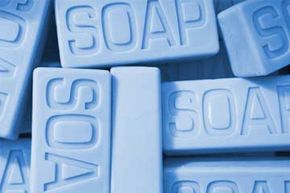Soap is a cleaning agent, but get it on the wrong surface and it has been known to leave a lasting impression. If you're wondering how to get detergent stains out of clothes, then you've come to the right place.
Few things stand out as much blue detergent stains on a light-colored fabric that you could have sworn you cleaned. It doesn't matter if you used too much detergent or are the victim of an accidental spill, the detergent stains have got to go.
Advertisement
To remove laundry detergent stains effectively, you must first assess the material type. After all, getting the detergent stain out is meaningless if you end up ruining the clothing in the process.
Follow these tips to breakdown buildup.
Advertisement
